Visual Coffee Grind Size Chart & Guide for Your Favorite Brew Methods
Coffee grind size is one of the most important factors in brewing a great cup of coffee.
It can be confusing to know which grind size to use for your coffee maker, but once you understand the basics, it’s easy to find the perfect grind for your beans.
What is coffee grind size?
The term “coffee grind size” refers to the size of the coffee grounds after a coffee grinder processes the roasted coffee beans. Grind size varies, ranging from extra fine (smallest particles) to extra coarse (biggest particles).
You can set the size of the grind on your grinder in increments. The lower the setting on the grinder, the finer the grind will be. Conversely, you get a coarser grind if you dial in a higher setting.
In general, there are 3 main coffee grind sizes:
Fine grind size
Coffee is ground to a fine powder. It is often used in espresso machines because it extracts more flavor from the beans. Moka pot coffee is also great with this grind.
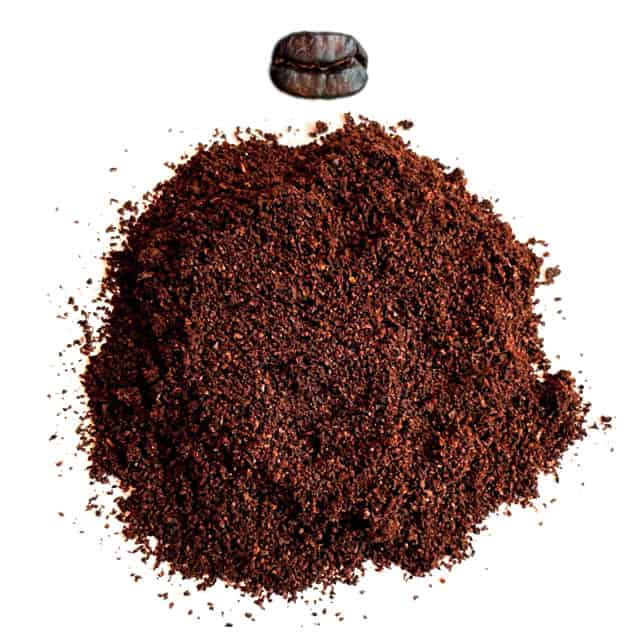
Medium grind size
Coffee is ground to a size between a coarse grind and a fine grind. This grind size is often used for coffee makers that use a filter, such as a drip coffee maker.
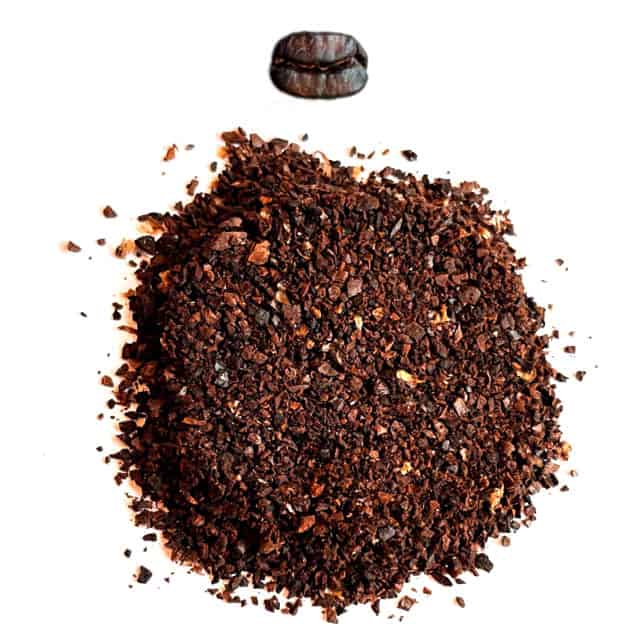
Coarse grind size
Coffee is ground to a larger size than other grinds. This grind is typically used for brewing methods that require a longer brewing time, such as the French press and cold brew.
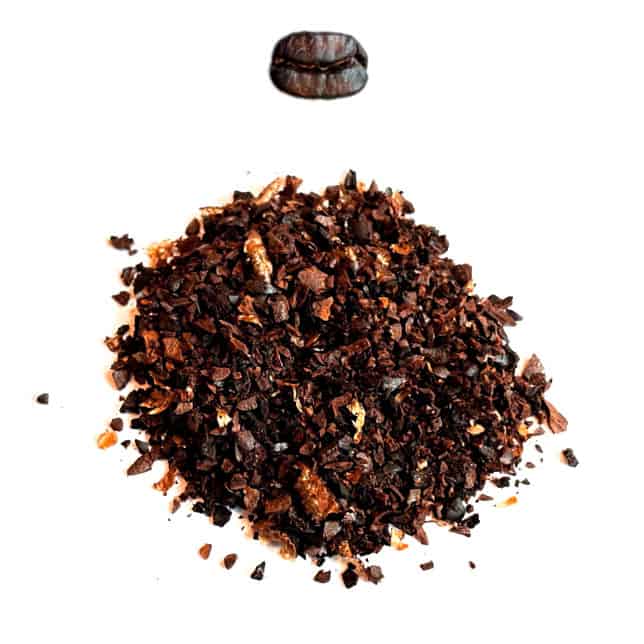
The primary grind sizes above are not exact enough, so the coffee industry differentiates a further 4 grind sizes, bringing the total to 7.
Here are the details of the 7 coffee grind sizes you’re likely to see in coffee recipes.
| Size | Feels like | Best for | |
|---|---|---|---|
| Extra fine | 0.1 mm | Flour | Turkish coffee |
| Fine | 0.2 – 0.3 mm | Sugar | Espresso, moka |
| Medium-fine | 0.5 – 0.7 mm | Table salt | Aeropress |
| Medium | 0.8 – 1 mm | Regular sand | Pour over, siphon |
| Medium-coarse | 1.1 – 1.3 mm | Rough sand | Chemex, drip coffee |
| Coarse | 1.4 – 1.5 mm | Sea salt | French press |
| Extra-coarse | 1.6+ mm | Rock salt | Cold brew |
Visual coffee grind chart
A picture is worth a thousand words, so here is a coffee grind size chart that will illustrate the differences between the various grind levels.
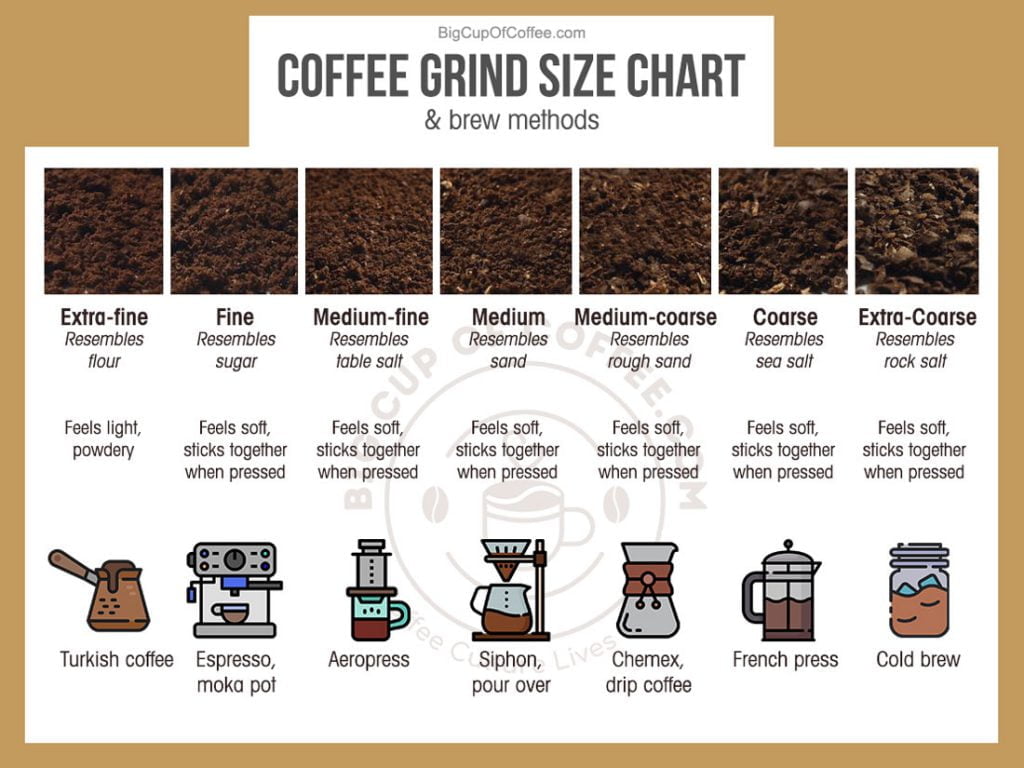
You can download the grind size chart as a pdf if you like.
The importance of a consistent grind
Did you know that the grind size of your coffee beans ultimately determines how your coffee will taste?
A coarse grind will give you a more bold flavor, while a fine grind will produce a smoother cup of coffee.
This is because of 2 factors:
- Surface area of each grind: When water extracts flavor from your coffee grounds, it first washes away the soluble coffee solids from the surface of each coffee particle.
- The smaller your grind, the more total surface area you have for the water to run through and extract taste from.
- Resistance and flow rate of water: With brew methods where water flows through your coffee grounds, the size of your grounds will restrict the water from flowing straight through. This is especially noticeable with espressos, where you need at least 9 bars of pressure to push the water through the finely ground coffee.
- Consistent grind particles are essential because as water finds its way through the least resistance. Larger coffee particles pose less resistance, so if your grounds have large AND small particles (uneven grind), the water will channel towards the larger particles, instead of evenly through the puck.
I’ll talk more about what type of grinder can produce consistent coffee grounds later in the article, so keep reading.
Which grind sizes work best for various brewing methods?
Grinding coffee beans too fine for any given brewing method makes them less flavorful and bitter.
On the other hand, grinding them too coarsely does not allow for extracting all of the flavor compounds, and leaves behind unfermented sugars.
What grind sizes should be used for your coffee?
Let’s have a look.
Turkish coffee grind size
The grind size for Turkish coffee is extremely fine, like powdered sugar or flour.
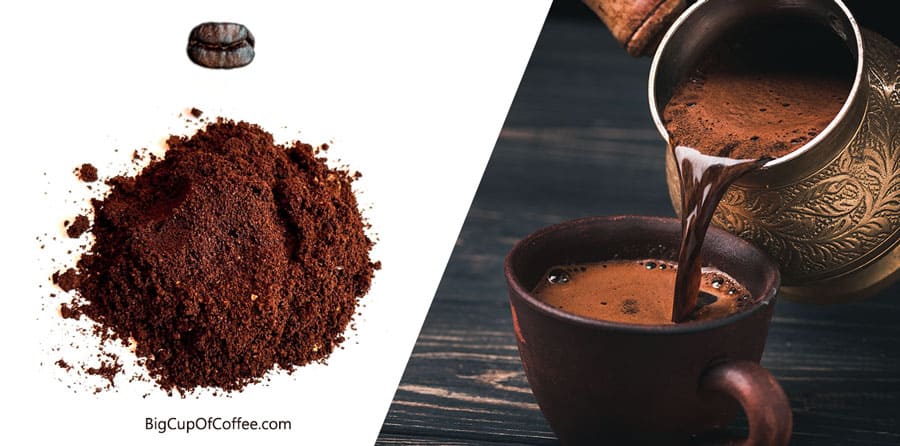
The coffee and water are boiled together for a short time in a tradition “cezve”. Quick extraction requires such ultra-small coffee particles.
And remember to let the coffee grounds settle at the bottom of the cezve before serving.
Espresso grind size
Espresso uses fine coffee grounds, but it’s not as simple as that. The ideal espresso grind size is when the desired 1:2 coffee to water ratio is achieved at a given extraction time of around 25 seconds. An aromatic espresso with a dense hazelnut-brown crema should be the result.
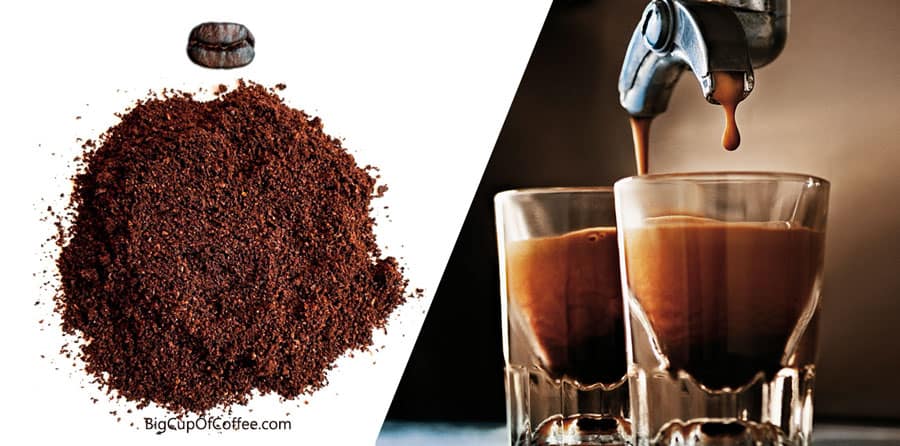
If the coffee is ground too finely, the espresso drips very slowly and becomes bitter. If the coffee is ground too coarsely, the espresso runs through quickly and will be sour and watery.
The exact grind size also has to consider numerous factors such as temperature, humidity, air pressure, quality, blend, and degree of roasting of the beans. When I worked as a barista, I had to test our espresso several times daily and adjust the grind as needed throughout the day.
Moka pot grind size
A fine grind size works well for Moka pot coffee is. Some people consider it too strong, though, so experimenting with a medium-fine grind is worth the effort.
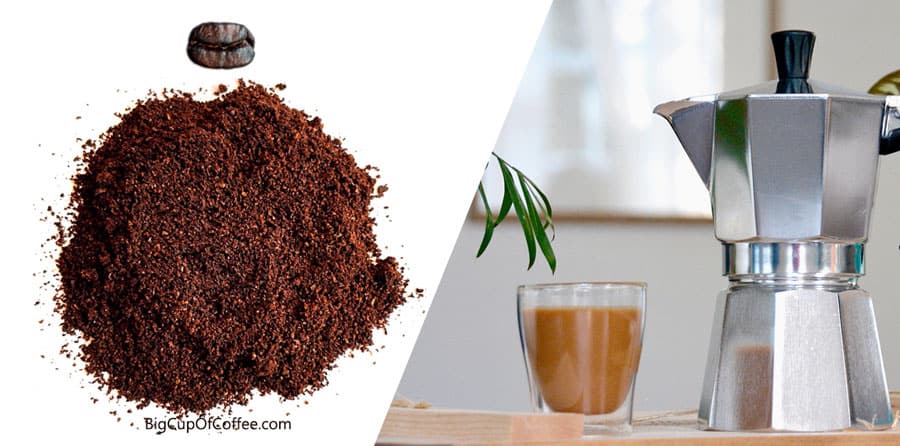
I recommend a 1:12 coffee-to-water ratio for making Moka pot coffee. This will result in an espresso-like taste, which is easy to make around a campfire as well.
Aeropress grind size
I recommend using a medium-fine grind setting for Aeropress coffee, with a 1 minute brew time.
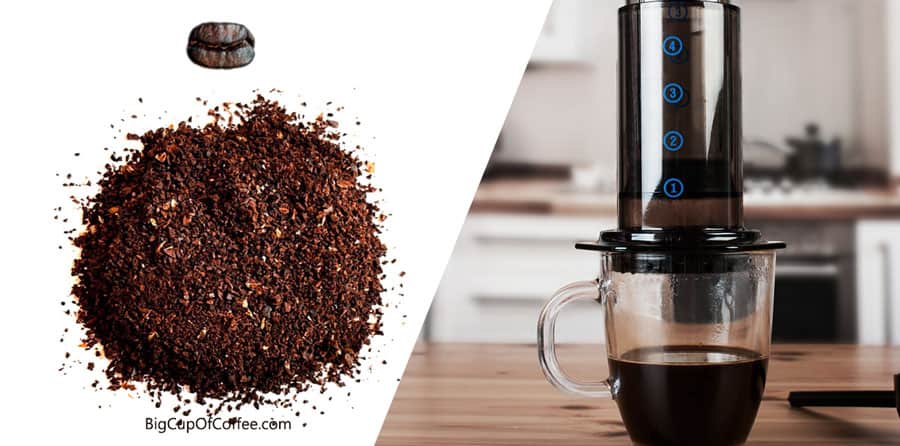
But with that said, the Aeropress is unique in that your grind size will depend on how long you let the coffee brew in the cylinder. For instance, if you want a stronger shot, you’ll need to grind the coffee finer.
Conversely, if you want a milder shot, you can go for a medium-coarse grind size and set your stopwatch for 3 minutes of brewing time.
Pour over (V60) grind size
A medium grind comparable to granulated sugar is ideal for pour over coffee.
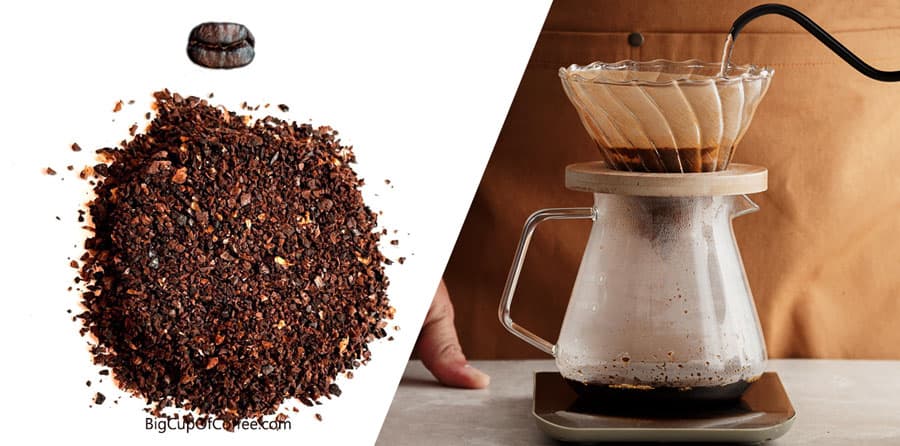
If you use a large amount of coffee per cup, you may have to grind your beans even coarser than this. This is especially true if you like strong-flavored coffee.
Siphon grind size
A medium grind which is just a little finer than drip coffee works well for the siphon brewing method.
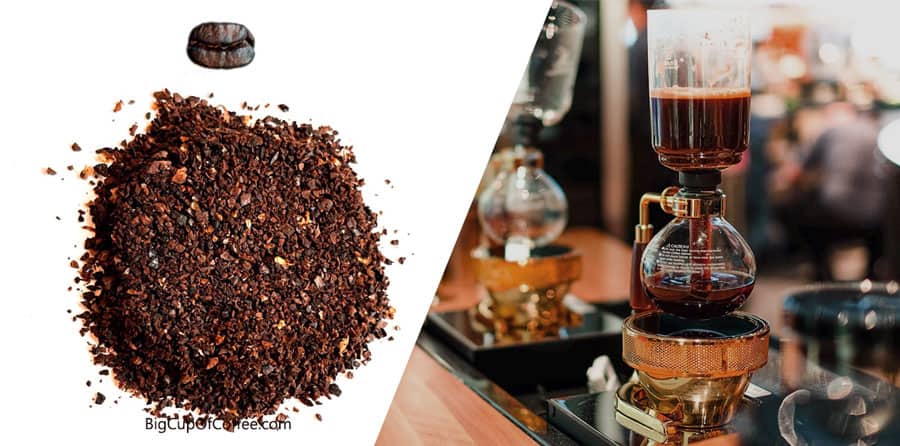
You’ll want to avoid making your grinds too fine, which can cause them to clog the filter. Conversely, you’ll also want to avoid making them too large.
Drip coffee maker grind size
The best coffee grind size for drip coffee machines is a medium grind. This grind size allows for the water to evenly extract the flavors from the coffee grounds, resulting in a well-balanced cup of coffee.
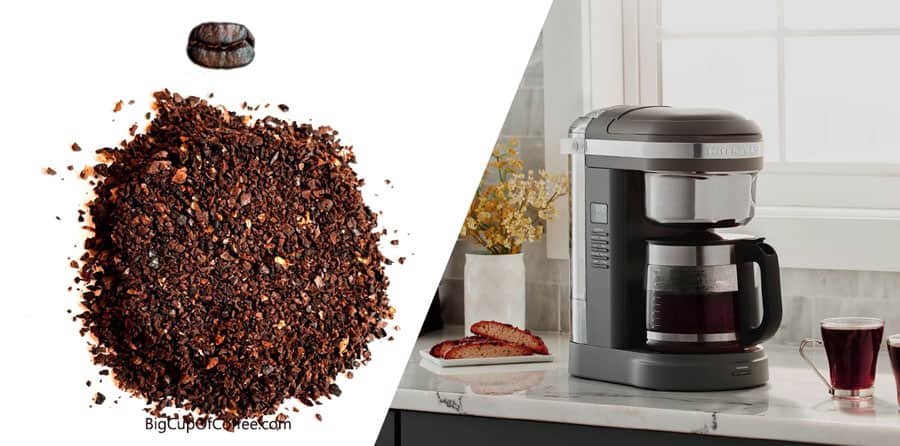
If the grind is too fine, the coffee will be over-extracted and taste bitter. If the grind is too coarse, the coffee will be under-extracted and taste weak.
Chemex grind size
The best grind size for Chemex coffee is a medium-coarse grind, allowing the coffee to brew evenly and produce a rich flavor.
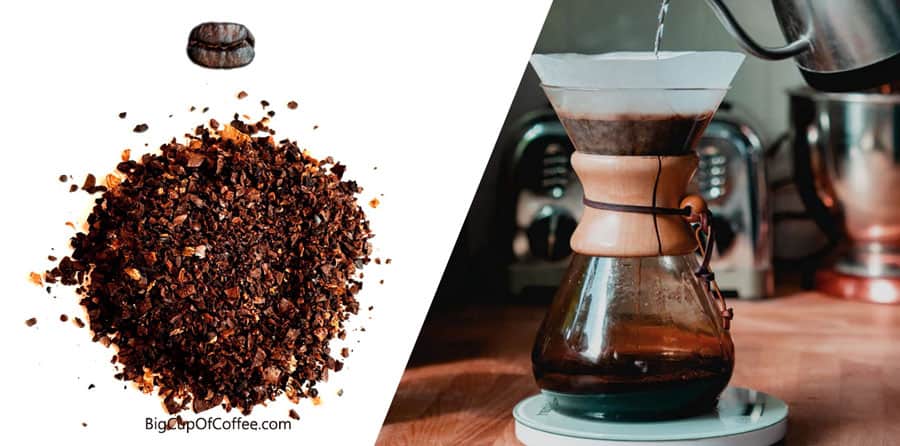
Even though Chemex resembles drip coffee, you need to use a coarser grind than other drip coffee brewing methods. This is because the volume of the Chemex is larger, and its unique filter is 20-30% thicker than normal paper filters.
French press grind size
French press coffee uses a coarser grind than other brewing methods, so a size between sea salt and gravel is best.
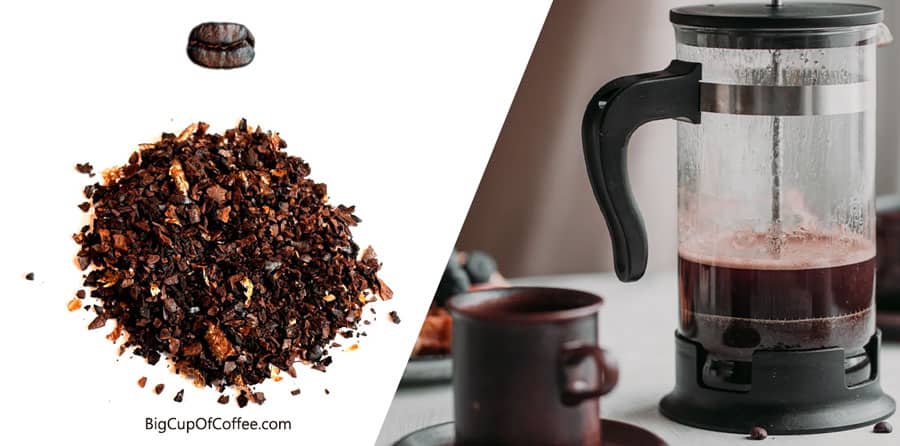
The coarser grind will help the coffee filter through the press more evenly and prevent the grounds from over-extracting and making the coffee taste bitter.
Keep in mind that the contact time between the water and coffee grounds is relatively long with the French press brewing method, so you want to avoid using a fine or medium grind.
Cold brew grind size
The best grind size for cold brew coffee is an extra-coarse grind, similar to rock salt. This is because a coarse grind will allow the coffee to extract slowly, which is the basis for cold brew.
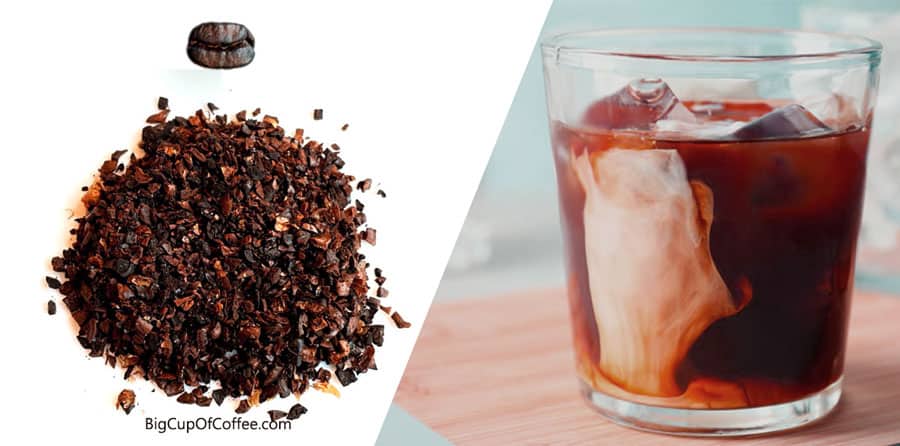
The steep time for a cold brew is anywhere between 12-18 hours. A fine or medium grind would extract too quickly and produce bitter coffee.
What happens if you set the wrong grind size?
Setting the wrong grind size for the coffee you are brewing will result in over-extraction or under-extraction.
Over-extraction occurs when the coffee grounds are left in contact with water for too long, causing the coffee to become bitter and astringent. Over-extraction occurs firstly if the grind is set too fine for the particular preparation method, and secondly if the extraction time is too long.
In contrast, under-extraction occurs when the coffee grinds are not in contact with the hot water for long enough. Under-extracted coffee tastes bland, flat, watery, and has no true crema. This occurs with a grind that is too coarse for the particular preparation method, as well as with an extraction time that is too short.
What kind of coffee grinder should you use?
Getting a consistent grind is the #1 job of the coffee grinder. If you don’t get a consistent grind, you’ll under or over-extract, your water flow will start channeling, and you’ll end up with undrinkable coffee. What a waste!
A burr grinder is a device that uses two opposing rotating discs (one stationary and one moving) to crush the coffee beans. Burr grinders produce consistent grinds because the discs constantly rub against each other, ensuring the particles stay small and evenly distributed.
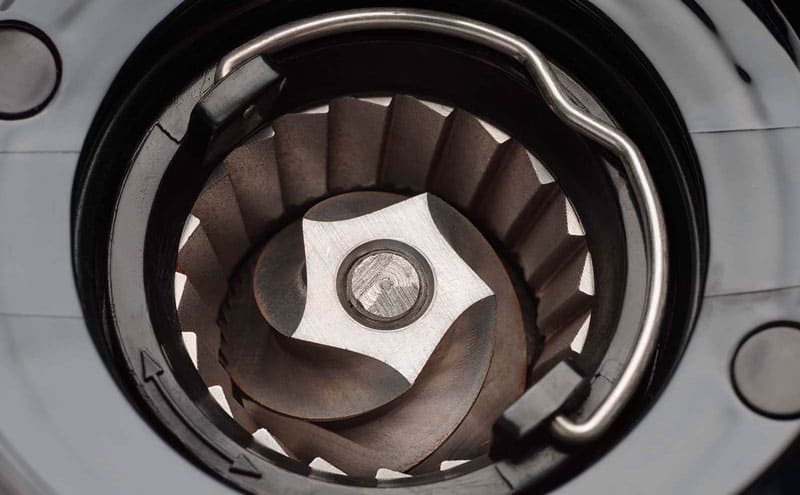
You can get electric burr grinders which are easy to use, but they tend to be expensive. Alternatively, you can buy a manual burr grinder which is cheaper, but it takes more time and manual labor to grind your coffee.
Do not use a blade grinder for grinding coffee, as the spinning blades create inconsistent grinds.
Also, you should not use pre-ground coffee beans, because it results in subpar coffee. You can buy whole beans and make freshly ground coffee at home, just like a café.
And don’t forget to clean your coffee grinder. If not maintained properly, your grinder’s performance will suffer, and so will the quality of your cup.
Other factors that influence the grind size
The above information on the correct grind is a rule-of-thumb guide, but the taste of your coffee is ultimately determined by other factors as well:
- The type of coffee bean – Arabica beans are typically ground to a finer grind than Robusta beans because Arabica has higher acidity than Robusta. The higher acidity of Arabica beans makes them taste brighter and more flavorful. Robusta beans have lower acidity and are typically ground to a coarser grind. This makes them taste more bitter and less flavorful.
- The roast level of the coffee bean – For a light roast coffee bean, a finer grind will be optimal to extract the maximum flavor. A dark roast coffee bean will require a coarser grind, as the beans will be more oily and bitter.
- The hardness of the water – Hard water has more minerals than soft water, meaning the coffee grounds need to be ground finer to extract all flavors. I’ve found that using filtered tap water results in acceptable water quality for home use, even if you have hard water.
- The characteristics of your coffee maker – This is especially true for espresso. Different espresso makers will react differently to the same coffee grind. You’ll need to experiment to find the optimal grind settings for your machine.
- Your personal taste – If you like your coffee strong, set the grind to a finer setting. If you prefer a smoother taste, then a coarser grind is better.
So, what’s the best grind size for your coffee?
It all depends on what coffee you are making, what type of beans you are using, and your personal preference.
Experiment with different grind sizes until you find the perfect combination for your morning cup of joe.

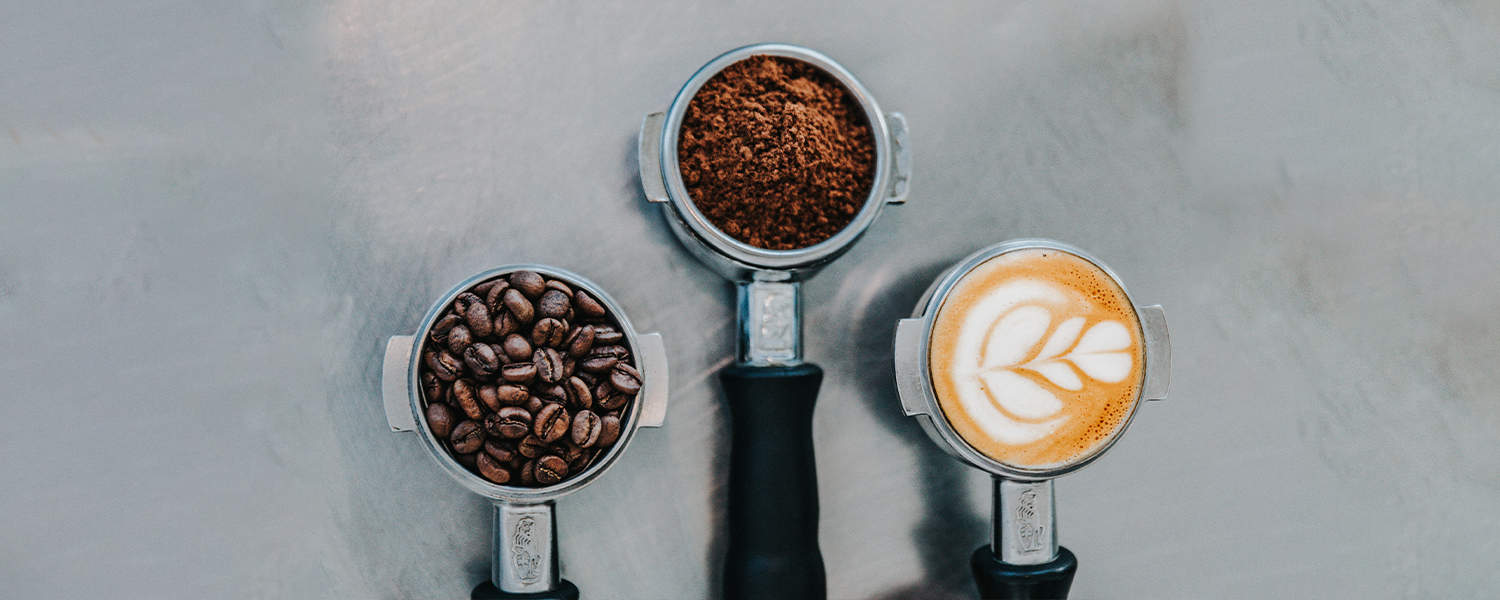
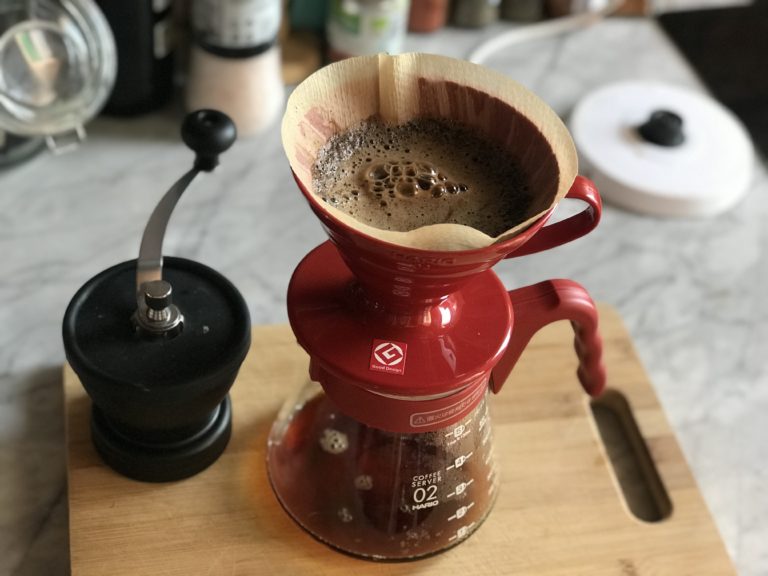

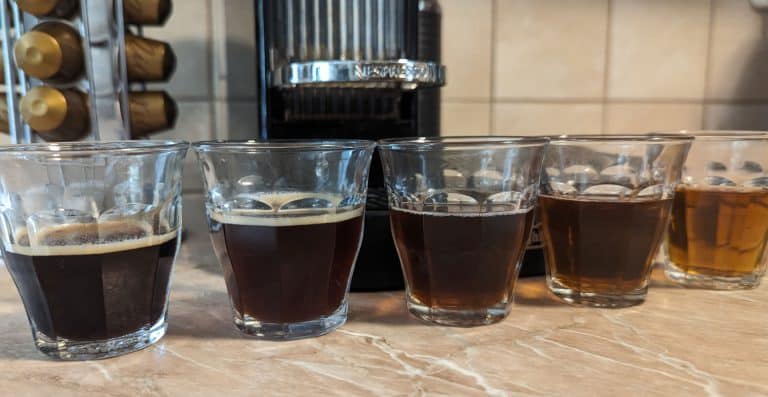
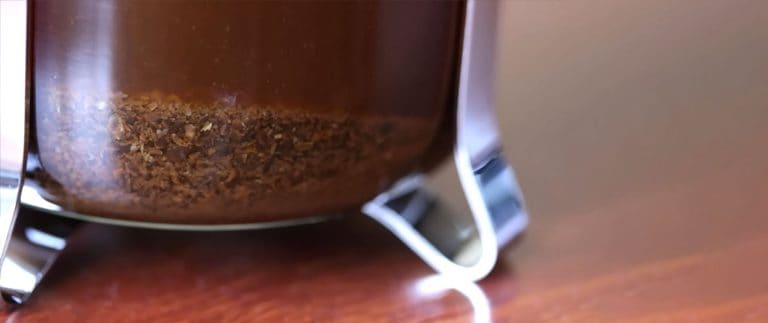
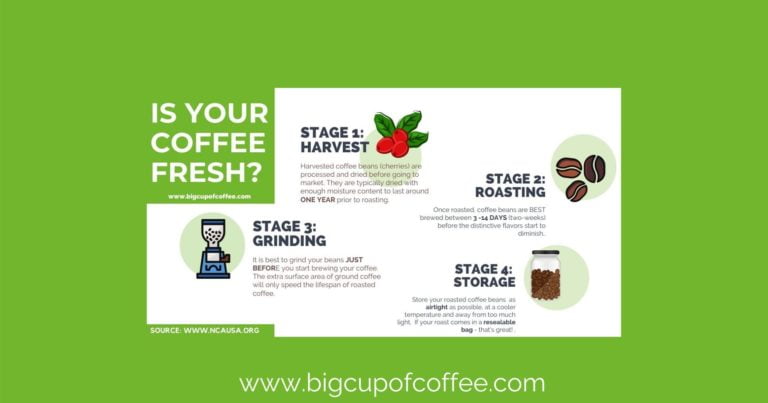
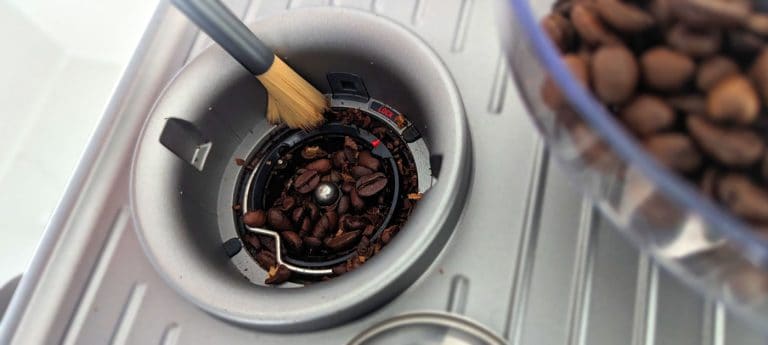
I always knew the size of the grind was important, but this breakdown was enlightening. It got me wondering, considering how grind size affects flavor, what’s your view on blade grinders versus burr grinders? Specifically, for the coarser grinds needed for a French press?
This is a good guide, I’ve always preached the importance of grind size to my friends. To add to the conversation for fellow readers, it’s important to invest in a quality grinder to maintain consistency. I’d go as far as saying that it’s as important as the coffee beans themselves.
Great article, Tom at BigCupOfCoffee. Just started my journey into manual coffee brewing techniques and this guide is incredibly helpful. However, I’m a bit confused about the grind size for Aeropress. You mention medium-fine, but I’ve seen some recipes call for a finer grind. Could you expound on how grind size might vary within the same brew method depending on personal taste or other factors?
Hi, I have a super detailed article on grind size for aeropress here: https://bigcupofcoffee.com/coffee-grind-size-for-aeropress/
The visual grind size chart is a lifesaver. Just wanted to drop a note of thanks, Tom @ BigCupOfCoffee. I’ve been experimenting with my new French press but couldn’t nail the taste until now – your chart helped me realize I was grinding my beans too finely. Finally, my morning cup tastes just right.
Yes, the french press requires a coarser grind size, glad the article helped.
Tom, I followed your recommendation for the espresso grind size, and it’s made such a difference. I’ve been pulling shots like a pro barista with the perfect crema on top. Just curious, does the coffee bean type factor into grind size as well?
Glad I could help SallyM 🙂 If you mean whether they are arabica or robusta, no. What matters though is the roast and freshness. These can alter the right grind size even by a lot for espresso.
I have a technical question about the consistency of grind. You mentioned that the surface area and flow rate of water are important, which makes sense, but could you clarify how the varying pressure in different brewing methods impacts grind size? Is there a rule of thumb?